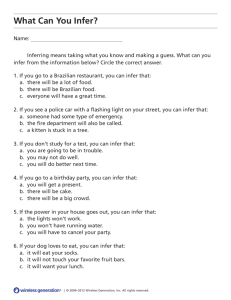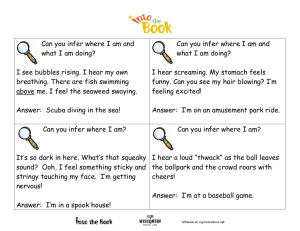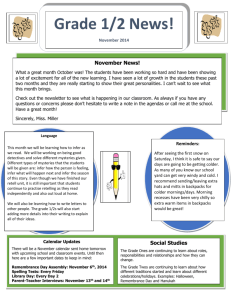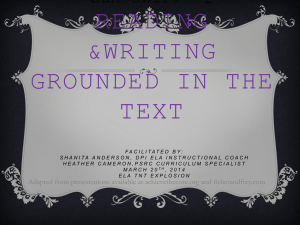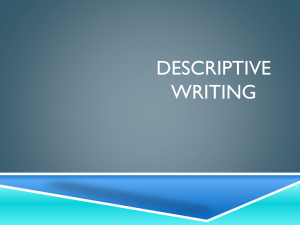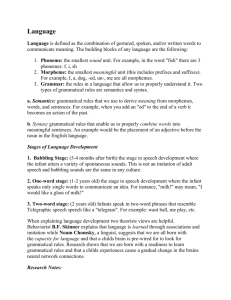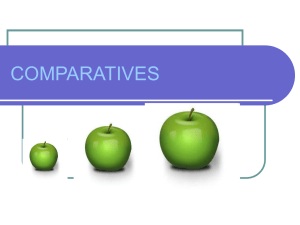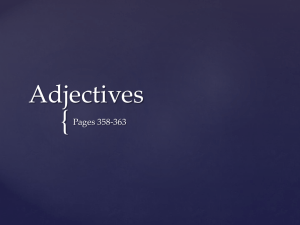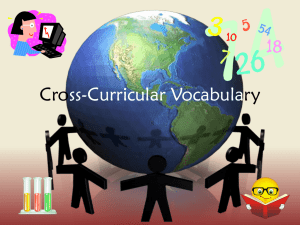Language Objectives - DenverPeerObservers
advertisement
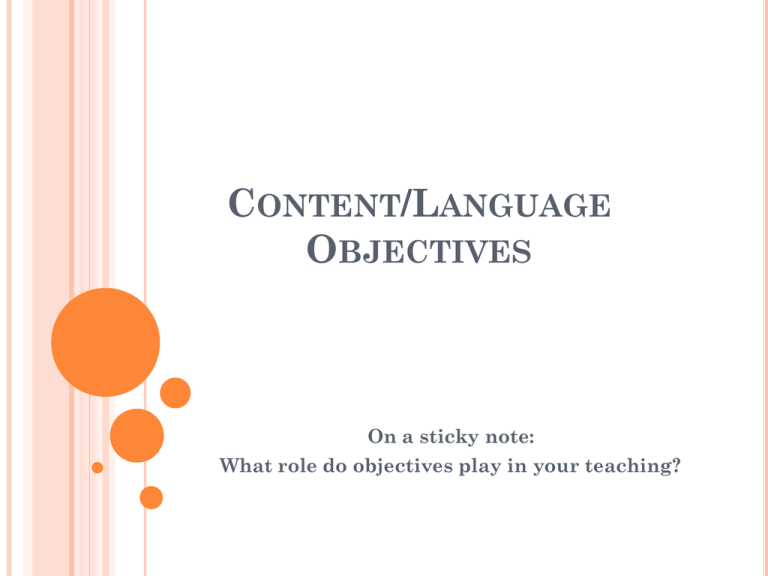
CONTENT/LANGUAGE OBJECTIVES On a sticky note: What role do objectives play in your teaching? OBJECTIVES Content Objective – Teachers will analyze the potential impact and possible pitfalls of language objectives. Language Objective – Teachers will explain the potential impact of language objectives with colleagues, using the stems: My students would benefit from language objectives because ___________. A potential problem to overcome is _____________. COMBINED OBJECTIVE Teachers will analyze and explain the potential impact of language objectives with colleagues, using the stems: My students would benefit from language objectives because ___________. A potential problem to overcome is _____________. WHAT DO LANGUAGE STUDENTS? • • • OBJECTIVES DO FOR Talk about your classes you teach Compare the first class of the day with the last class Compare your first and last class of the day using comparative adjectives with a table partner. • Bank of Comparative Adjectives: • better, louder, larger, lazier, nosier, quieter, more attentive, more engaged, more active, more distracted, etc. POSSIBLE STUDENT RESPONSES: Literacy: He was mad. The character in the book was very angry. The character in the story was furious with his mother because she wouldn’t let him go to the park. Math: Three plus seven is ten. Three plus seven equals ten The sum of three plus seven equals ten. To solve the problem, I added three plus seven and the sum was ten. INTRODUCING LANGUAGE/CONTENT OBJECTIVES: Read through overview On your own: in which indicators do you notice “content/language objects” ? What conclusions do you draw? Table Talk How do content/language objectives have the potential to positively impact learning? DIVE INTO THE FRAMEWORK – I1 On your own: Circle key words in the effective column. How does effective (5-6) compare/contrast with approaching (3-4) , not meeting (1-2) and distinguished (7)? WHY? With a partner, discuss your assigned bullet from the student behaviors in effective or distinguished. In the classroom, what might that student behavior look like? Sound like? Discuss why that particular bullet is important to student learning. Whole group share. DEFINITION ACCORDING TO FRAMEWORK FOR EFFECTIVE TEACHING Content/Language objectives are measurable statements that indicate what content students will learn and how they will demonstrate that learning through language functions and forms using appropriate supports. - Language function is the purpose of the communication, such as narration or persuasion. - Language forms are the conventions used to communicate, such as the grammatical structures, patterns, syntax, and mechanics associated with the sentence level meaning. HOW DO CONTENT AND LANGUAGE OBJECTIVES SUPPORT EACH OTHER? Think about:.. Content objectives --What students are learning --The knowledge and skills students are expected to learn Language objectives --How students express their learning (not the activity/task) --The language functions and forms students need to demonstrate their learning of the content objective EXAMPLES Content Objectives Students will solve a system of linear equations by graphing. Students will make predictions using context clues from the text. Students will identify the experiences of former slaves and slave owners after reconstruction. Language Objectives Students will explain their process by using transition words (first, second, third) to their partners Students will make predictions using the words, “I predict________ because________” and context clues from the text during turn and talks. Students will compare and contrast the experiences of former slaves and slave owners during reconstruction using the words “similar” and “different” and a graphic organizer. IF YOU WANT YOUR STUDENTS TO… Compare and Contrast Analyze Infer Describe Explain What would a masterful response sound like? What words would you need to hear from your students that would let you know they mastered the content objective? LANGUAGE FUNCTIONS AND FORMS BY DEFINITION: How will the student use the language? (Function Bloom’s taxonomy words) What grammatical structures and vocabulary will be used? (Forms) Compare and Contrast Retell Analyze Persuade Synthesis Infer Describe Explain Categorize •Syntax and sentence structure •Academic vocabulary (in context, in relationship to other words) •Grammatical features that link specifically to concept (parts of speech, tense and mood, subject/verb agreement, adjectives, adverbs etc.) TYPES OF SUPPORTS Sensory Supports Visual Supports Group Supports • Real-life objects (realia) • Manipulatives • Pictures & photographs • Illustrations, diagrams & drawings • Magazines & newspapers • Physical activities • Videos & films • Broadcasts • Models & figures • Charts • Graphic organizers • Tables • Graphs • Timelines • Number lines • In pairs or partners • In triads or small groups • In a whole group • Using cooperative group structures • With the Internet (Websites) or software programs • In the native language (L1) • With mentors ACTIVITY Directions: Highlight the function, underline the form and circle the support in each language objective. THINK ALOUD Content Objective: Students will describe the main characters in the story. Language Objective: Students will describe the main characters in the story using “because”, “for example,” and adjectives from a word bank. MATH LANGUAGE OBJECTIVE Content Objective •Students will add and subtract decimals to the hundredths place. Identify the form that will be used during the task. Determine the Function APPLICATION – YOU DO 1. Choose a content objective from your classroom. 2. How will students demonstrate their learning of the content objective? Function (the purpose, or what students are doing with language) Form (sentence or grammatical structures, vocabulary words) CLOSURE/REFLECTION Teachers will analyze and explain the potential impact of language objectives with colleagues, using the stems. What role do objectives play in your teaching? FOR MORE INFORMATION… Classroom Instruction that Works for ELL Students, Jane D. Hill and Kathleen M. Flynn; pages 22-35 “Knowing Your Learning Target” by Connie M. Moss, Susan M. Brookhart, and Beverly A. Long, Educational Leadership, 68(6), 66-69. Or search “objectives” on Schoolnet, PD Search for videos, books, articles and more LITERACY LANGUAGE OBJECTIVE • Students will make inferences about characters. Determine Language Function Content Objective • i.e. explain, infer, analyze • Students will infer using the words “I infer”, “because”, and evidence from the text during turn and talks with their reading partner. Identify the form that will be used during the task. 23
